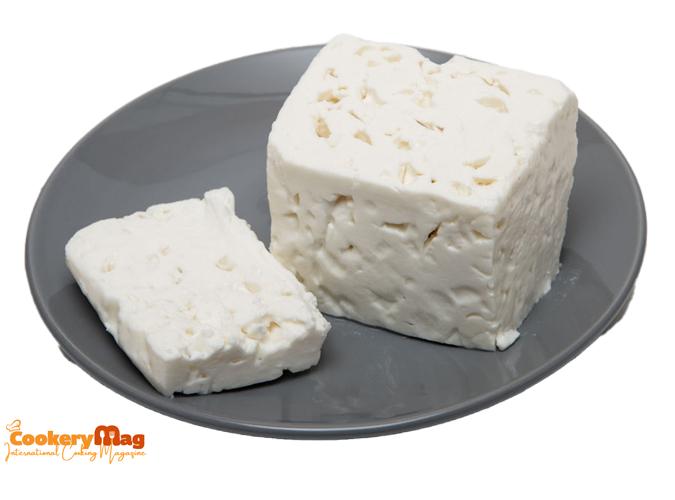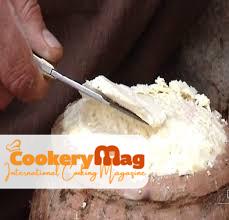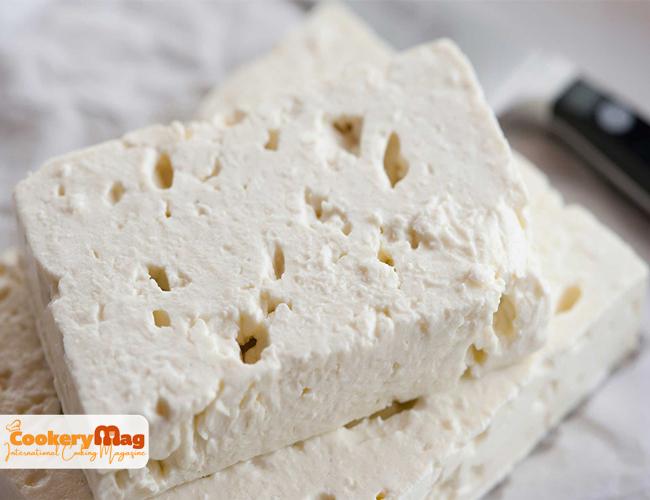© All Rights Reserved.
Persian Cheese Recipe and +4 Must-Try Panir Varieties
Persian Cheese is one of the types of dairy products that is widely prepared from milk in hundreds of different types.
Those who love cheese are called turophiles, and in this matter, there is no difference between local or foreign cheeses. This name was chosen for them in early 1983.
If you also admire this product and are a turophile, we invite you not to miss the following article in Cookery Magazine.
If we want to look at cheese realistically, we can take help from this writing by James Joyce in his famous book “Ulysses”, which said, “Cheese is the carcass of a milk.”
Ingredients for making Persian Cheese
| Full-fat milk | 3 kg |
| Vinegar | 9 tablespoons |
| Salt | 2 tablespoons |
Recipe for making Persian Cheese
The first step
To make delicious and simple homemade Persian cheese, first pour fresh milk, preferably full fat, into a suitable pot, then put the pot on low heat and let it boil.
The second step
After the milk boils, we add 3 tablespoons of vinegar for every kilogram of milk. Next, we stir the milk to mix with the vinegar, then let the cheese curds form.
The third step
After the milk and vinegar are mixed, there is no need to remix the milk. After the cheese curds are formed, we take them out of the milk using a ladle and put them in a net cloth.
The fourth step
At this step, we hang a lace cloth from a place, and then we place a bowl under the cloth so that the whey pours into the bowl.
After the excess water from the cheese is completely removed, we put the cheese in a colander.
The fifth step
Now, we put a heavy object like a mortar on the cheese so that it forms and the pieces of cheese stick together. After about 3 to 4 hours, our cheese is almost ready, and we can put it in the refrigerator.
The sixth stage
To make whey, we add salt to the remaining water from the milk and stir it well until the salt is completely dissolved in the whey.
Finally, we cut the cheese and put it in salt water, then store it in the refrigerator.

Having a journey in the history of Paneer
The history of cheese goes back to prehistoric times, the period before the invention of calligraphy. No one knows when cheese was made and by the people of which region.
Cheese is an ancient food. Since we don’t know exactly when cheese was first discovered, it can be said that cheese is as old as animal husbandry in human history.
Historical records show that cheese has been around since humans milked the milk of domesticated animals.
The interesting thing is that cheese has changed very little during the thousands of years of its existence.
Except for the process of pasteurization and the industrialization of cheese production, we can say that we consume pretty much the same form of cheese that our ancestors consumed thousands of years ago. There are many different types of cheese, each of which has different properties and uses.
Cheese is one of the integral components of the human diet.
In many regions of the world, cheese has been consumed as a food or part of other foods for centuries.
Some types of cheese are used raw, and others are used in other cooked foods.

We said that yogurt was created when Middle Eastern shepherds used goat skins to carry animal milk.
The bacteria in this skin caused the birth of yogurt.
Historical evidence suggests that this is most likely true of cheese as well.
As mentioned, we do not know exactly when cheese was first made and by which region. However, the oldest cheese recorded in history was produced about 10,000 years ago, and its consumption was a popular food in Egypt, Greece, and ancient Rome.
Historians say that this paneer was made in the Middle East and probably somewhere near today’s Palestine with the aforementioned method by shepherds of sheep flocks.
According to historians, the first panir were probably sour milk curds that were produced by the activity of goat skin bacteria and the heat of the sun in the plains of the Middle East, where shepherds used the empty stomachs of goats to carry fresh milk.
The shepherds who made these goat skins had to eat these sour crusts because of hunger.
In the north, cheese is made from reindeer milk. In Mongolia, panir (cheese) is made from camel milk, in Tibet from yak milk, and in other countries from buffalo milk.
It is also stated that the first cheese was obtained from the sap of the fig tree, and the ancient people, after putting the leaves of the fig trees in the milk to make the milk curds, poured it on the stone and after it hardened and curd, for this To get the water completely, they put another stone on it.
Later, man learned to obtain cheese (paneer) from the stomachs of mammals, especially wild rabbits, and when the cheese was made, he dried it in the sun, salted it, wrapped it in tree leaves, and used it for days, and months to come.
In 1922, French confectioners made a special cheese pastry called cheese tart.
Talleyrand, the famous French politician, considered cheese to be the best food.
Brillat-Savarin, the greatest French chef, has a famous saying about cheese: A dessert without cheese is a beautiful woman with one eye.

The word “cheese” in French is derived from the Latin word “cheese container,” which is where the cheese is formed and created.
In ancient Greece, paneer was one of the nutritious foods, and Homer also talks about paneer in his works; when Magion was wounded in the right shoulder, Nestor ordered him to bring goat cheese for healing.
Until the 5th century AD, cheese with whole bread and figs was the food of Greek warriors, and even today, cheese maintains its importance and competes with meat in terms of food; we have had this before as noon panir sabzi.
Today, cheese is made industrially. Some people believe that eating cheese causes mental retardation.
In response to these people, I must say that although cheese contains tyramine, which, if it crosses the blood barrier, causes a decrease in mental performance, it is in the body of all of us.
There is an enzyme that breaks down cheese tyramine as soon as it comes into contact.
However, it has long been recommended not to consume cheese alone and try dates, nuts, all kinds of fruits, and olives with panir, which, if used together with cheese, will provide calcium to the body with better performance.
Iranian White Cheese arrived in Europe with Asian traders
Another story about the arrival of cheese in Europe indicates that traders from Central Asia brought the art of cheese-making to Europe.
The Romans quickly turned cheese-making into fine art (they were one of the world’s best artisans, after all) and refined the processes with their skill and knowledge.
They found that different conditions and methods of storage can lead to the production of different cheese flavors with different characteristics, so they were able to create different types of cheese.
The Roman elite, having large houses, had separate kitchens for a cheese called Caseale, where they could prepare the cheese, and even the people of the larger cities of Rome took the homemade cheese they needed to be smoked to a special center for flavoring.
At first, knowledge of cheese-making was limited to Roman farmers and landowners, but eventually, it was transferred to the local people.
Roman soldiers who had finished their military service and married into the local population would set up farms in their retirement and pass on their cheese-making skills to the next generation.

Different types of cheese based on texture
Cheese is either soft or hard. It depends on how much water is left inside. From every ten kilos of milk, only one kilo of cheese is obtained. Each cheese is named after the place where the special way of making it originated.
Cheeses are divided into 4 groups based on texture:
• Dry: This group of cheeses has a dry and hard texture and is usually roasted quickly due to heat.
For this reason, they are added to food at the time of serving or the last few moments. Parmesan is the most famous cheese of this family.
• Semi-dry: A large number of cheeses are included in this group and have a very diverse consumption method. Cheddar, feta, and Swiss cheese are in this group.
• Soft or semi-soft: this group is usually served both in food and alone. Mozzarella and Camembert are the most famous members of this family.
• Very soft: A large part of this group is used in all kinds of food and desserts.
Mascarpone, cream cheese, ricotta, and cottage cheese are the famous names of this group.
They also classify types of cheese based on their other characteristics, including the type of milk compounds, the enzyme used to sour it, the animal’s diet, and its working and production methods.
The most famous types of cheeses in Iran
Persian cheeses
Iranian cheeses or, according to their production method in the form
- Molded cheese

- Waterskin cheese

- paneer kozeh

- Pichak

Categories by geographical and ethnic area
- Boroujerdian cheese
- Sangsarian cheese
- Kurdish cheese
- Lighvan cheese (Tabrizian cheese)

- Siah Mazgi panir

- Turkish cheese (Qashqai Turkic tribes)
- Golpayeganian panir
- Talashi cheese (manufactured in Talash regions)
The most expensive cheese in the world
Pule, which is known as donkey cheese, is considered to be the most expensive cheese in the world so each pound (453 grams) of this cheese costs $600 or more.
This cheese is produced in only one place in the world, and that is a farm in Serbia, so if you want to try this cheese, you have to go to Serbia.
Six and a half gallons of donkey milk are needed to make one kilogram of this cheese.
After Pule, Moose cheese and White Steelcone Gold cheese are the second and third most expensive cheeses in the world, respectively.
There are many benefits of donkey milk, which has a long history of medicinal and cosmetic uses.
The United Nations has recognized it as an excellent alternative for those who are allergic to cow’s milk.
Conclusion of Iranian white cheese
Thank you for being with us in the Panir recipe article. If you have any questions, it’s my honor to answer. Enjoy your exploration of Persian cuisine!
With an increasing global fan base, Iranian white cheese is making a mark on the international culinary stage. Its unique characteristics and cultural ties contribute to its global recognition as a premium cheese with a story to tell.
Please share this article with your friends on Facebook, Twitter, Pinterest, and other social media. 🧡
Panir (Paneer) Recipe | Persian cheese
Course: AppetizersCuisine: Persian FoodDifficulty: hard4
servings30
minutes40
minutes300
kcalIngredients
Full-fat milk 3 kg
Vinegar 9 tablespoons
Salt 2 tablespoons
Directions
- The first step
To make delicious and simple homemade Persian cheese, first pour fresh milk, preferably full fat, into a suitable pot, then put the pot on low heat and let it boil. - The second step
After the milk boils, we add 3 tablespoons of vinegar for every kilogram of milk. Next, we stir the milk to mix with the vinegar, then let the cheese curds form. - The third step
After the milk and vinegar are mixed, there is no need to remix the milk. After the cheese curds are formed, we take them out of the milk using a ladle and put them in a net cloth. - The fourth step
At this step, we hang a lace cloth from a place, and then we place a bowl under the cloth so that the whey pours into the bowl.
After the excess water from the cheese is completely removed, we put the cheese in a colander. - The fifth step
Now, we put a heavy object like a mortar on the cheese so that it forms and the pieces of cheese stick together. After about 3 to 4 hours, our cheese is almost ready, and we can put it in the refrigerator. - The sixth stage
To make whey, we add salt to the remaining water from the milk and stir it well until the salt is completely dissolved in the whey.
Finally, we cut the cheese and put it in salt water, then store it in the refrigerator.
Frequently Asked Questions about Persian Cheese
When did humans realize that the milk of other animals can be used for nutrition?
The answer to this question goes back to the domestication of animals such as sheep and goats and then cows.
This discovery dates back to 9 thousand years BC. The first people who milked animals were the Sumerians.


